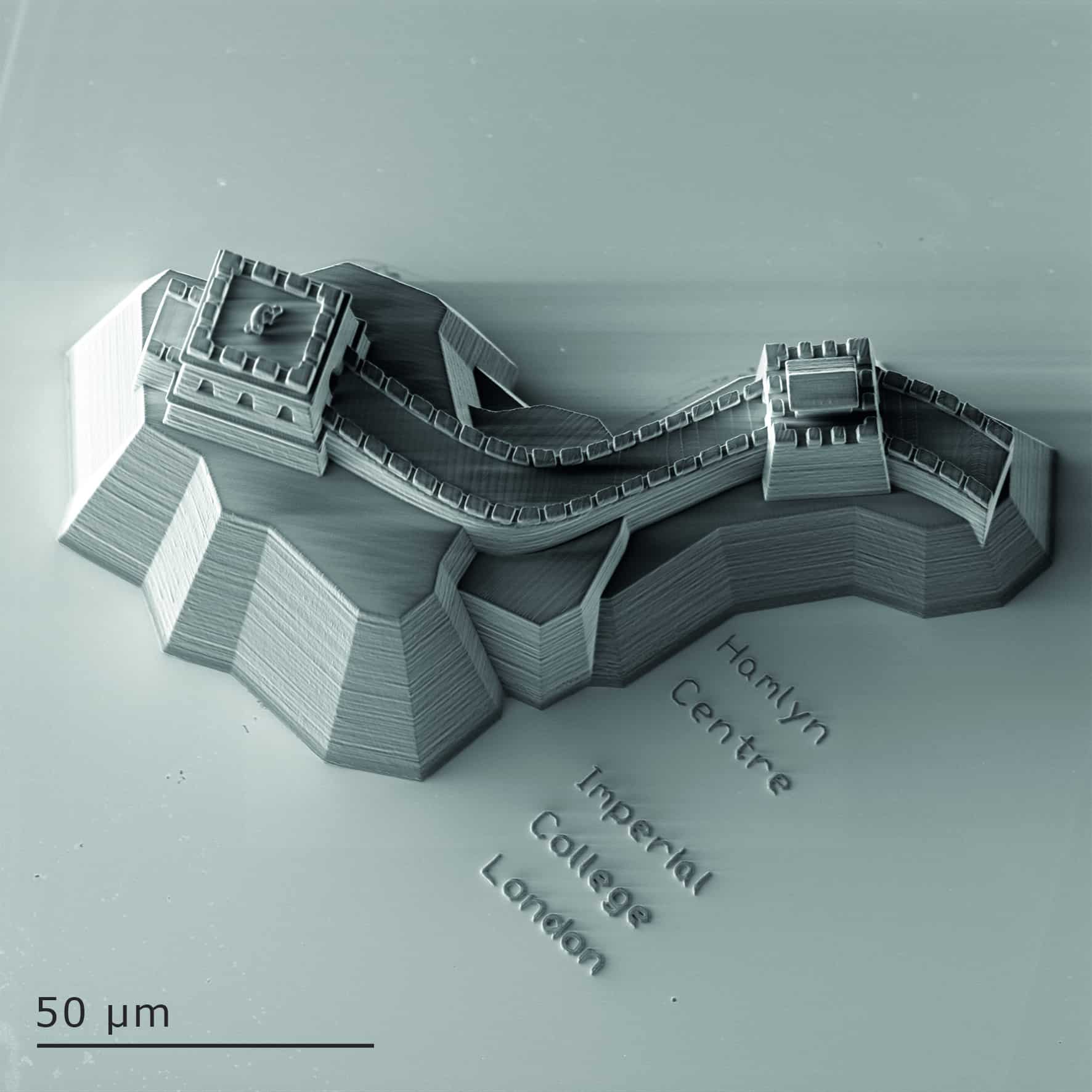
By Hamish Johnston and Tushna Commissariat
Last month, China’s president Xi Jinping’s was on a state visit in the UK and while here, he toured a few academic institutions, including the UK’s new National Graphene Institute (NGI) in Manchester and Imperial College London. As we reported in an earlier blog, Nobel-prize-winning Manchester physicist Kostya Novoselov presented President Xi “with a gift of traditional Chinese-style artwork, which Kostya himself had painted using graphene paint”. This week we found out that the Imperial scientists also presented him with a “tiny gift” in the form of a 50 µm scale version of a section of the Great Wall of China, imaged above, created with a Nanoscribe 3D printer. Prince Andrew, who was also on the visit, was given an image of a panda leaping over a bamboo cane, which was printed on the tip of a needle.
“Edwin Hubble was a man of great talent, exceptional dedication and excellent timing who reshaped our view of the universe,” is the first line of a tribute to the great astronomer that has just been published by the Perimeter Institute for Theoretical Physics in Canada. Hubble was born on this day in 1889 in Marshfield, Missouri – the epitome of small-town America. Although he excelled at school, the young Hubble was better known for his prowess on the basketball court. And his path to becoming the greatest astronomer of the 20th century was not a straightforward one. After completing a BSc at the University of Chicago, he taught school and then studied law, Spanish and literature at Oxford before settling into an astronomy PhD back at Chicago. In 1929 he realized that the universe is expanding, a fact that has shaped our view of the cosmos – and of our very existence – ever since.You can see the full article over at the Perimeter website, but below is one of the fun bits of trivia.

And for some light weekend reading, take a look at how scientists at the University of Cambridge found that the bite of the American cockroach is five times more powerful than that of a human – relative to body weight – ouch! If you want to know exactly how Tom Weihmann and colleagues worked this out (it’s not for the squeamish), Jennifer Ouellette describes the experiment in all its squirming detail over at Gizmodo: “A cockroach can bite five times stronger than a human”.



